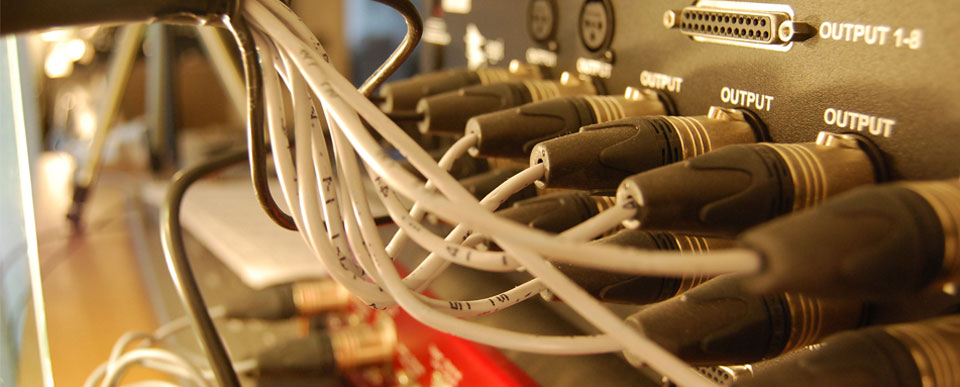Now, click to watch our video at our sister site ..
Unbalanced
The unbalanced lead employs a cable with two wires, an inner insulated Live wire which is surrounded by a braided Earth wire which is itself protected by an outer insulation. The audio is sent down the Live wire. The Earth wire shields the Live wire from unwanted radio wave interference.
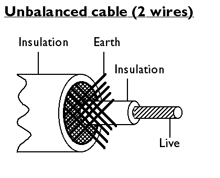
The Live wire may also be referred to as ...
- Send
- Positive
- Hot
The Earth wire may also be referred to as ...
- Screen
- Shield
- Sleeve
- Ground
The unbalanced lead has 3 disadvantages ...
- If the lead is too long the earth will be unable to stop some interference getting into the audio wire.
- If the lead is too long there will be a certain amount of audio signal loss mainly in the higher frequencies.
- It cannot carry Phantom Power.
For these reasons, the unbalanced lead is unsuitable for carrying Mic level signals which are quiet/weak and need extra protection.
In the studio the mono unbalanced lead terminates in 1 of 2 primary types of connector ...
1. Phono plugs

Note: A connector of this type can also be used to carry 2 channels of unbalanced SPDIF digital audio.
2. 1/4" (mono) jack plugs

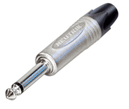
Balanced
The balanced lead carries a "professional" quality signal and employs a cable with three wires. These are Live, Return and Earth. The audio is sent down the Live wire and is returned through the Return wire. The Earth wire just shields the Live and Return wires from unwanted radio wave interference.
The Return wire may also be referred to as ...
- Negative
- Cold
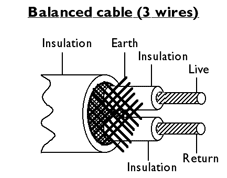
The balanced lead has 3 advantages ...
- In long leads high frequency audio loss is reduced.
- Interference from radio waves is completely eliminated in leads of all lengths.
- A balanced lead can carry Phantom Power to a microphone or D.I. (Direct Injection) box.
In the studio, the mono balanced lead terminates with 1 of 4 primary types of connector ...
1. XLR (Canon)
Employs three pins: X (eXternal) = pin 1. L (Live) = pin 2. R (Return) = pin 3.
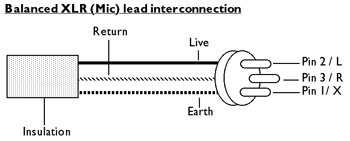

Note: A connector of this type can also be used to carry 2 channels of balanced AES digital audio.
2. 1/4" (stereo) TRS (tip-ring-sleeve) jack plugs
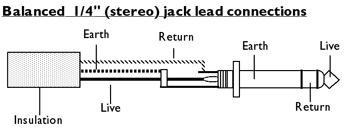
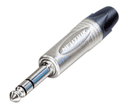
3. Bantam or GPO (B guage) jack plugs
Used to connect patch leads between sockets on a professional patchbay.
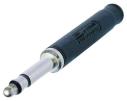
4. D-sub
A multi-pin standard allowing multiple connections in a single connector (eg 8 in, 8 out).
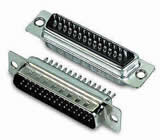
How does a balanced lead eliminate interference?
The balanced lead works by using a system called Common Mode Rejection explained in the following diagram.
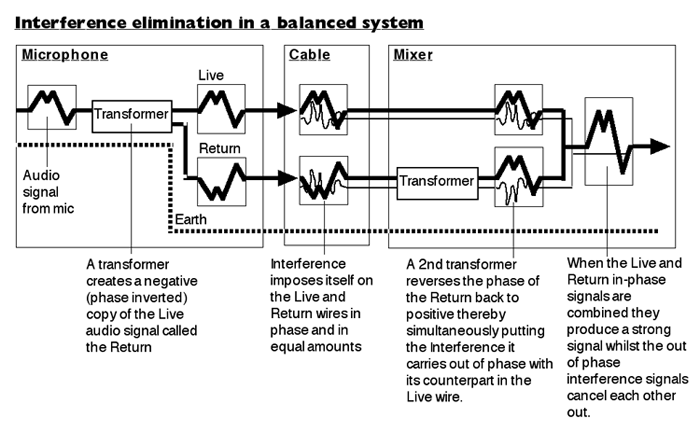
NOTE: You may also want to read about digital audio synchronisation.

